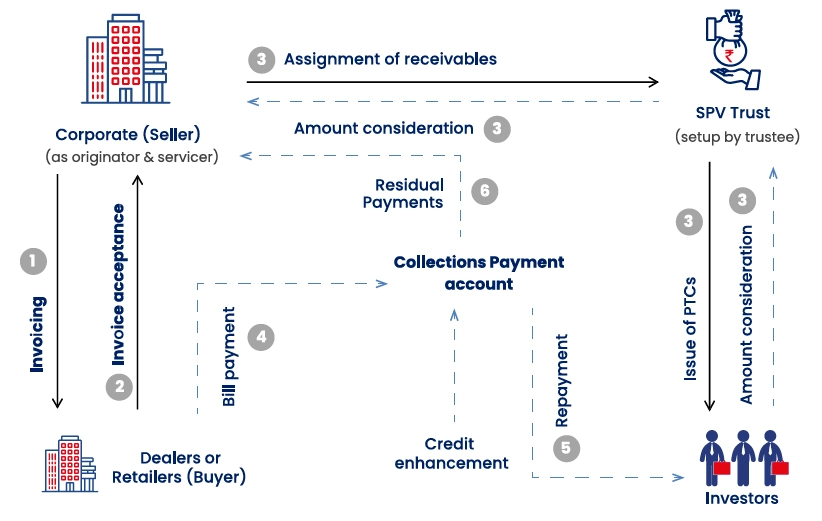Tech and Trends
Budgeting for Future Technology Investments: Embracing Automated Solutions

Staying still today keeps you behind. Organizations are investing in digital transformation sooner rather than later, even if they do not primarily operate in the technology space. Hence, at any point in time, a CFO is required to judge investment requirements for technology. Many banks, for example, are moving onto cloud-based Loan Management Systems for cost-efficient and automated management of their books, as well as a completely automated front-end for their customers. While some shifts are revenue-related, others are still critical in keeping the organization primed for the future. Hence, the following three points offer perspective on methods and musings that help reach a more well-rounded decision.
Fund allocation is a collaborative decision
Coming from the understanding that no department works in isolation, financial decision-making is a team effort. For starters, it is a good idea to have the business and technology teams co-own the initiative. With people on both sides willing to put in the effort, it embraces the idea that investing in technology is more than building functionality. For example, with a computer hardware company diversifying into software, when the shift is tied to the company’s mission to be pioneering innovators, the investment is easier to justify. The contribution of the business team is in building the language around value creation, which is the primary way the ideas move through the organization. Moreover, it also enables the CFO to assess for impact rather than just capability.
For all of this to be possible, the CFO must see value in investing in Financial Planning and Analysis (FPA) individuals (who connect the two teams) and building systems for knowledge sharing. The latter is key, as successful co-owned projects are also co-thought. Hence, for the CFO to judge projects more precisely, they need to foster business and tech collaboration in more ways than one, including the development of automated processes for better efficiency.
Overall direction of the budget stays the same, but the process is iterative
Building from the previous point, when the tech budget is built on the core fundamentals – the organization’s values and ambitions for the future – it becomes easier for the CFO to maneuver shifts with ease. Volatility is inevitable as transformation projects easily run in the span of 2-3 years. Going with the previous example, the computer hardware company known is now on track to introduce an IT solution service to strengthen its software arm. In the case of an economic downturn, the CFO needs to react by adjusting the budget. This is possible by structuring the budget using key pillars, with each pillar representing a particular reason to spend on technology (e.g., R&D, maintenance, internal operations, risk and compliance, etc.). Now in the face of the shock, the CFO no longer needs to build the budget from scratch; instead, they just need to weigh each pillar appropriately. For example, for the moment they can decide to contract the R&D budget by 30%. Thus, when the pillars already reflect the core fundamentals of the business, the pillars themselves stay in place, and only the spending is modified.
Hence, while the overall approach to the budget does not change, the process is iterative. One because of internal and external shifts, and two because budgets are simply predictions. Here, informative checks such as rolling forecasts can provide the direction needed to make the tweaks along the way, including adjustments to automated systems and processes.
Judge executability, along with value creation
When it comes to capturing the impact of any new investment, it is important to judge the chances of success. While it is understood that technology is invested at times for reasons beyond direct revenue growth, such as value creation, it is important to ask the right questions. As mentioned before, delivering functionality is only the tip of the iceberg. To uncover the rest, it is important to consider the track record of the delivering team, if the market is mature enough to receive such developments, if there are any low-hanging fruits that can be achieved first, etc. Regarding the hardware company now launching its software services, the CFO can ask what additional financial costs are required to deliver the product at high quality, as is always the intention. To deliver a high-performing product, more time and funds are required to ensure it easily integrates, has an up-to-date technology stack, upgrades effortlessly, and releases with fewer errors in the testing process. The resources needed to this effect would have possibly gone uncovered until closer to delivering the product capabilities if not asked for directly. Hence, judging the investment beyond just its immediate value creation, including its impact on automated systems and processes, deserves its place in the budget evaluation process.
By taking time to look beyond just the dollar, including inter-departmental objectives and evaluating for practical aspects, makes the budgeting process more meaningful. One is because the budget allocation is built with a broader perspective, with diverse KPIs of each department in mind. Second, regardless of the decision reached, it builds transparency and open channels of communication important for the continued success of the technological transformation. Hence, while the CFO is sure of their skill, their flair in the art of budgeting for technology, including the integration of automated solutions, is always something that can be played with.







